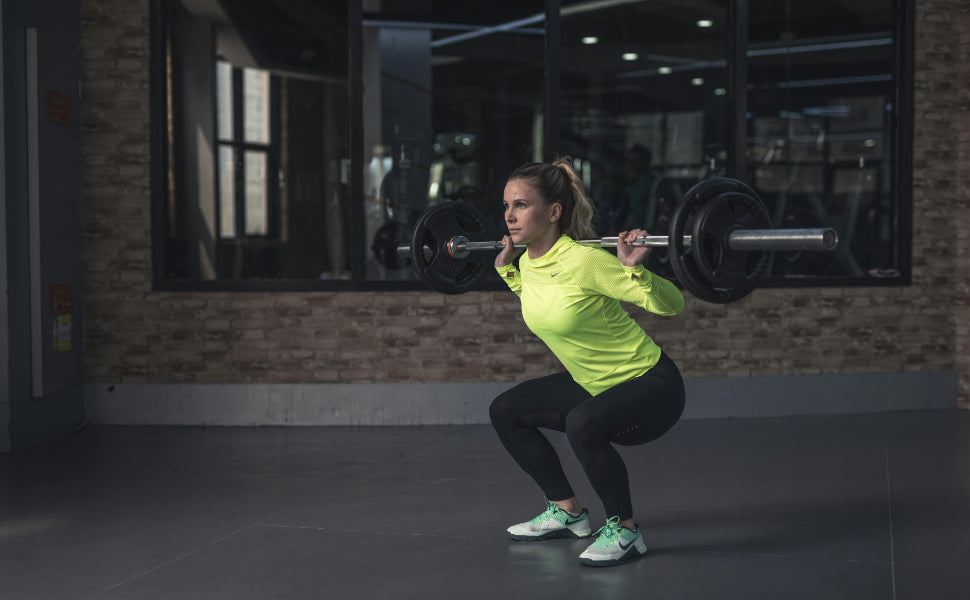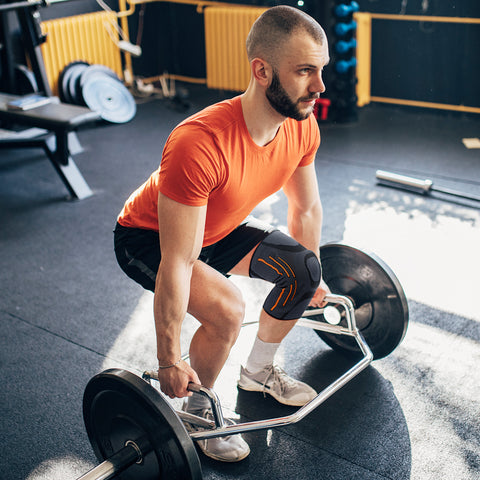Knee Pain While Squatting

People who participate in sports, weightlifting, or physical fitness activities frequently worry about knee pain and injury when squatting. The knee joint is strained significantly when squatting, which is a basic exercise that can cause a variety of knee issues if done incorrectly or too frequently. To preserve overall knee health and functional mobility, this blog by Fivali will highlight how crucial it is to grasp good squatting mechanics and how important it is to address knee pain.
Squatting Mechanics and Knee Pain
Impact of squatting mechanics on the knee joint
Because squatting involves so much loading and movement, the knee joint is greatly impacted by the mechanics of the exercise. Squats put a lot of flexion and extension on the knee, putting it under a lot of force. Because the patella tracks in the femoral groove when squatting, the patellofemoral joint in particular is prone to stress. As one descends deeper into a squat, the knee joint experiences increasing compressive stresses that compromise joint integrity.
Common types of knee injuries
Squatting has been associated with a number of knee problems, including as meniscus tears, ACL or MCL strains, and patellofemoral pain syndrome. Many things can lead to these injuries, such as using incorrect form, loading too much, or squatting with abrupt movements.
Overuse and Improper Technique in Squats Leading to Knee Injuries
Knee injuries can arise from many processes resulting from overuse or incorrect technique during squat exercises. For example, limited mobility in the hip or ankle can cause compensatory motions at the knee, which can raise tension and increase the risk of injury.
The load on the knee joint during squats can be increased by an imbalance in the strength or activation of the muscles, especially the hamstrings and quadriceps. Inadequate muscle support or abrupt movements might also lead to an increased risk of knee injury.
Preventive Measures and Considerations

- Safe squatting technique and protection for the knees: It's critical to have your knees aligned and your posture correct when squatting to lower your chance of injury. To stop knee problems from getting worse, you might need to change your exercise regimen or get advice from a fitness expert.
- Use a knee support brace: To offer stability and lower the chance of possible knee injuries, think about using knee support braces as an extra safety precaution during squat workouts.
- Developing stronger muscle groups can help maintain the knee joint: The quadriceps, hamstrings, glutes, and calf muscles should all be strengthened in order to give the knee joint the vital support it needs. Exercises that assist develop the requisite muscular strength and stability around the knees, such leg presses, lunges, and step-ups, can lower the risk of injury during squats and other activities.
- Sufficient stretching and warm-up to avoid knee injuries: Making a full warm-up a priority before working out increases blood flow to the muscles and gets them ready for action. Dynamic stretches for the hamstrings, quadriceps, calves, and hips help increase the range of motion and lower the risk of strains and injuries to the knees and other muscles during exercises like squats.
- Identifying knee injury symptoms and taking action to stop an aggravation: It's critical to pay attention to any indications of knee pain or discomfort when exercising. In order to prevent aggravating the issue, it's critical to halt the workout and determine the source if you're suffering knee pain or instability.
Seeking Professional Help and Rehabilitation Advice
If you squat and end up with a knee injury, it's important to act quickly to minimize damage. This entails putting ice on the injury, pausing the exercise, and raising the leg. In the event of extreme discomfort, considerable swelling, or instability, medical attention must be sought.
A consultation with a healthcare professional, such as a sports medicine physician or orthopedic specialist, is required to obtain an accurate diagnosis and specific treatment plan. Options for treatment could include surgery, pain and inflammatory medications, or physical therapy. To make an informed choice regarding the next course of action, it's critical to go over various treatment options, hazards, and the anticipated length of recovery with the medical expert.
It's crucial to follow the recommended rehabilitation program during the recovery period. This program may include certain exercises designed to strengthen, increase flexibility, and restore function in the knee. Reintroducing squats and other lower-body activities gradually, under the supervision of a physical therapist, can help reduce the risk of reinjury. Making the required modifications to the treatment plan can be facilitated by keeping an eye out for any pain or discomfort during rehabilitation and by being transparent with the medical staff.
fivalifitness.com
*Disclaimer
The information provided in articles written by Fivali is intended for educational and reference purposes only. The content on this website (www.fivalifitness.com) is not intended to diagnose, treat, cure, or prevent any disease. We do not recommend self-diagnosis or self-treatment based on the information provided in our articles. Always consult a qualified healthcare professional if you have any concerns about your health or well-being.
If you are experiencing any symptoms or discomfort, we strongly encourage you to seek medical attention from a qualified healthcare professional. Only a licensed healthcare practitioner can provide an accurate diagnosis and an appropriate treatment plan tailored to your individual needs.













